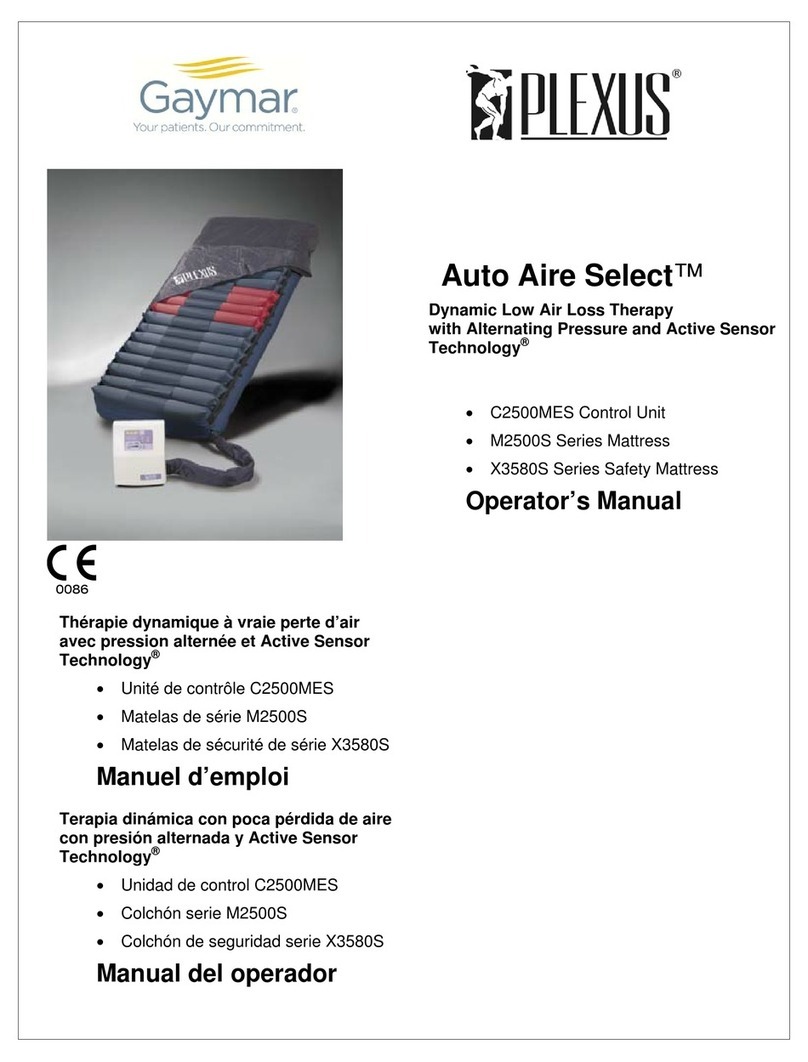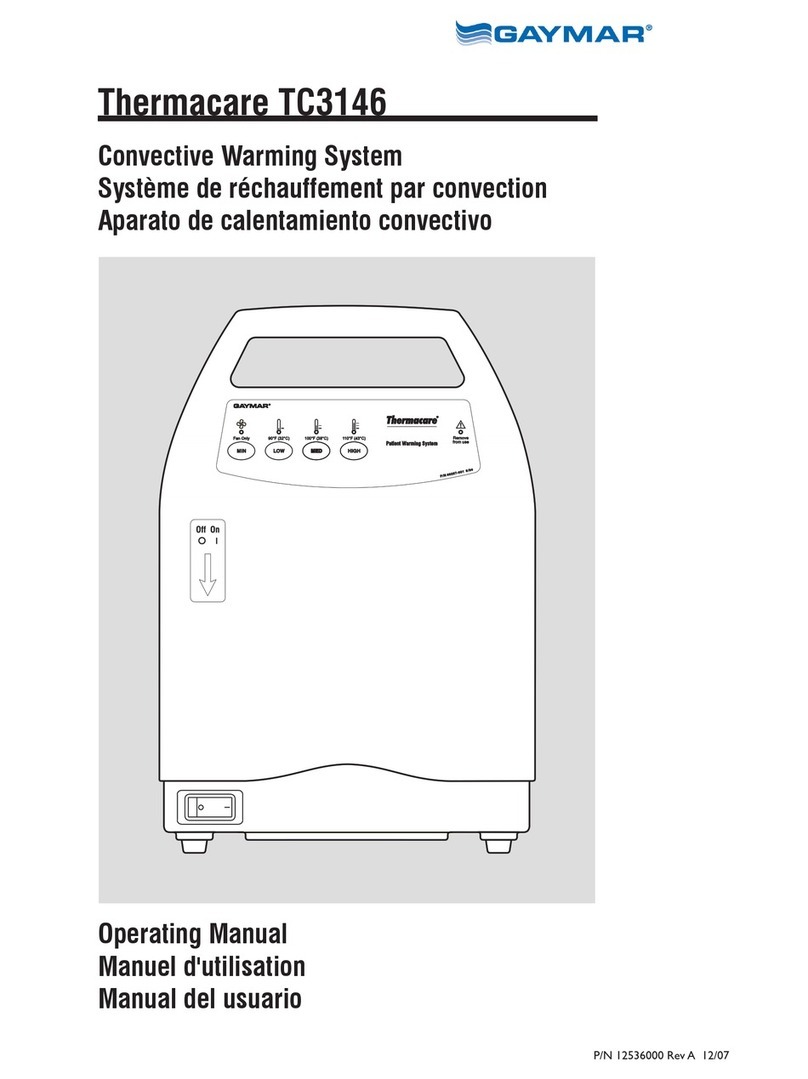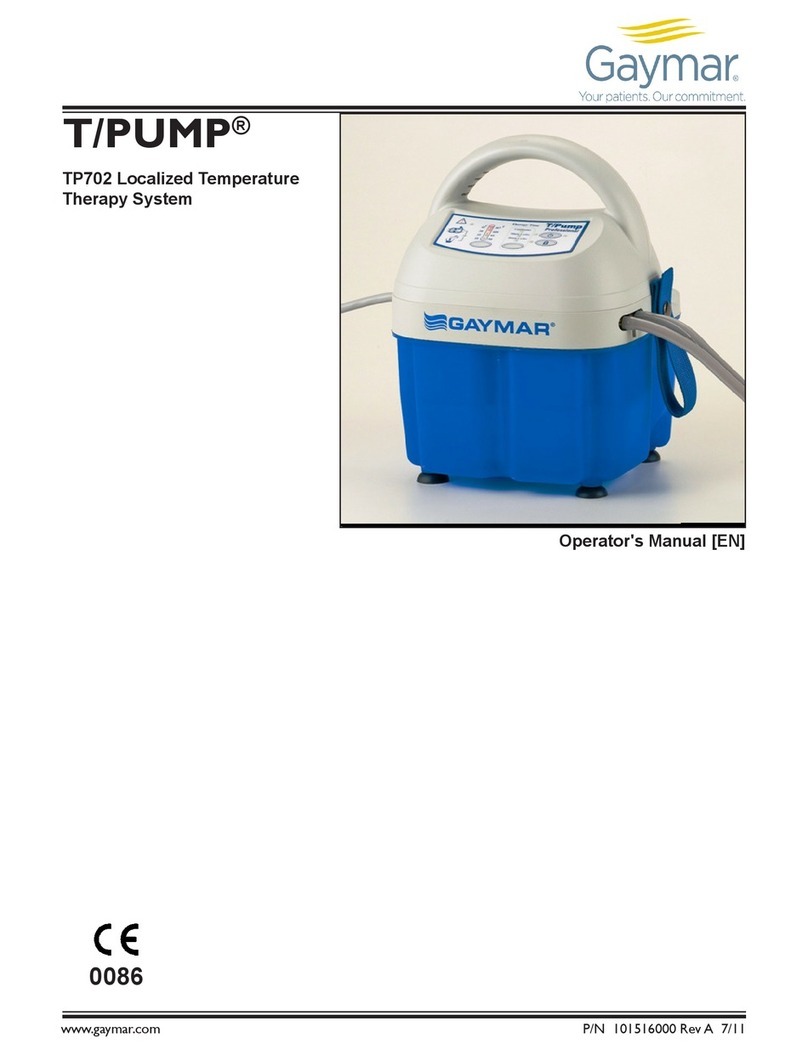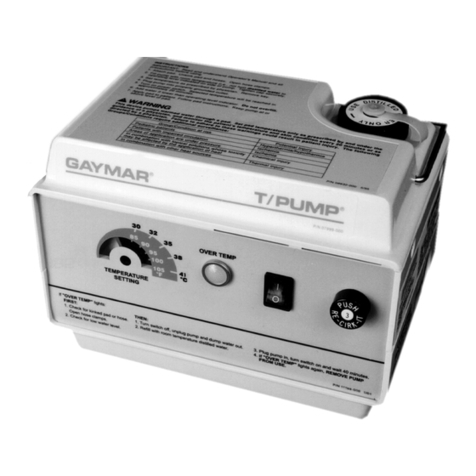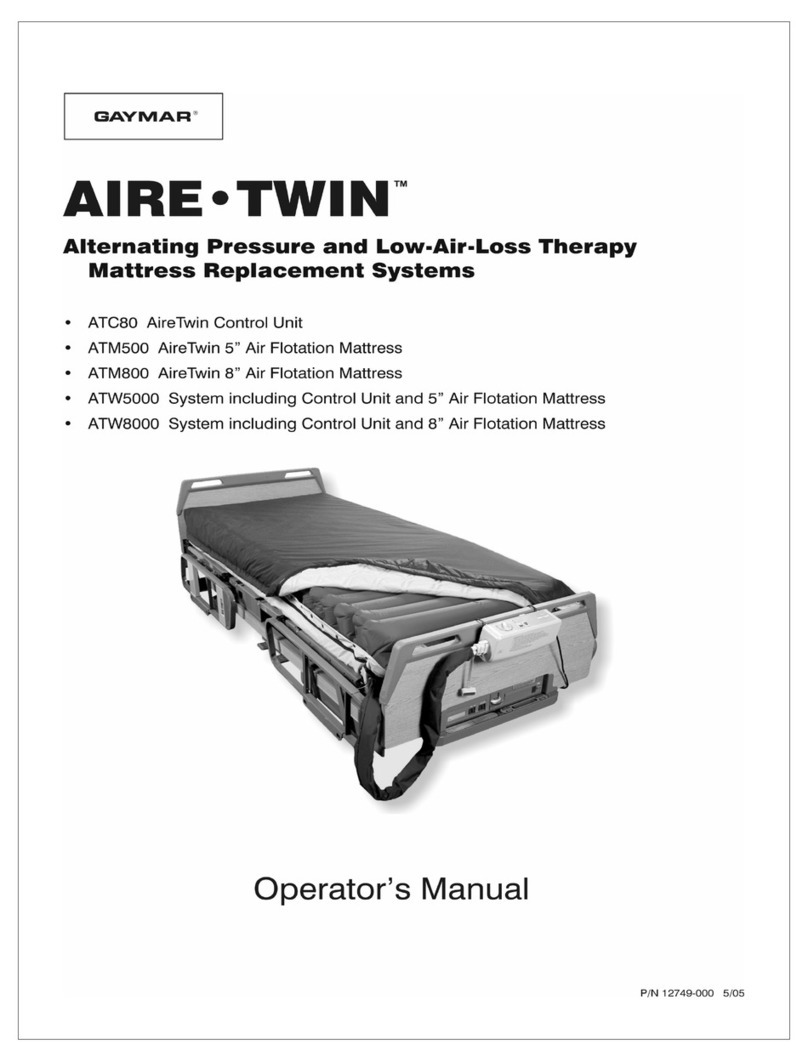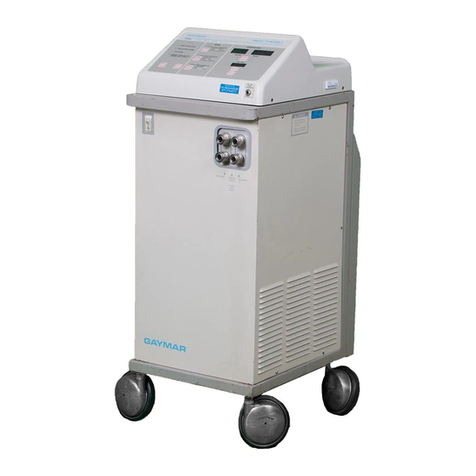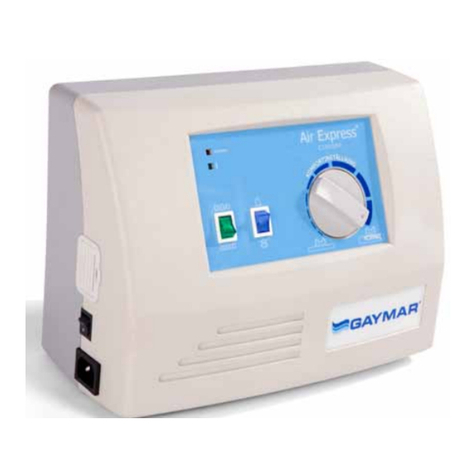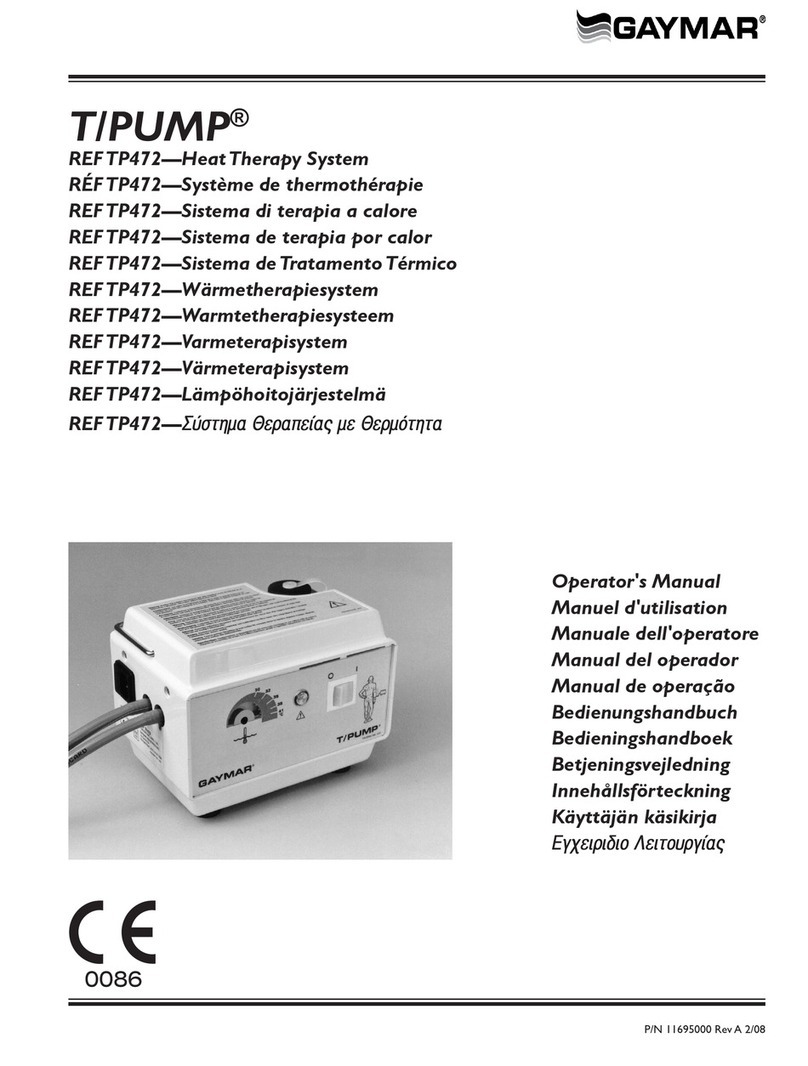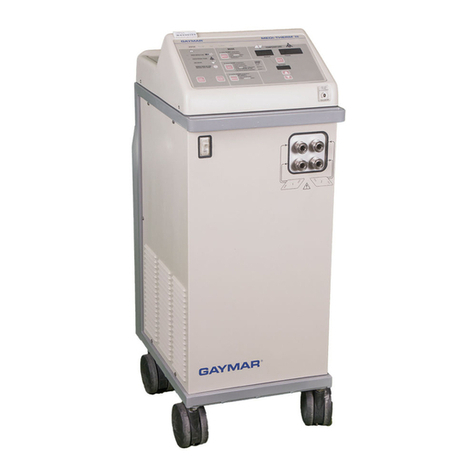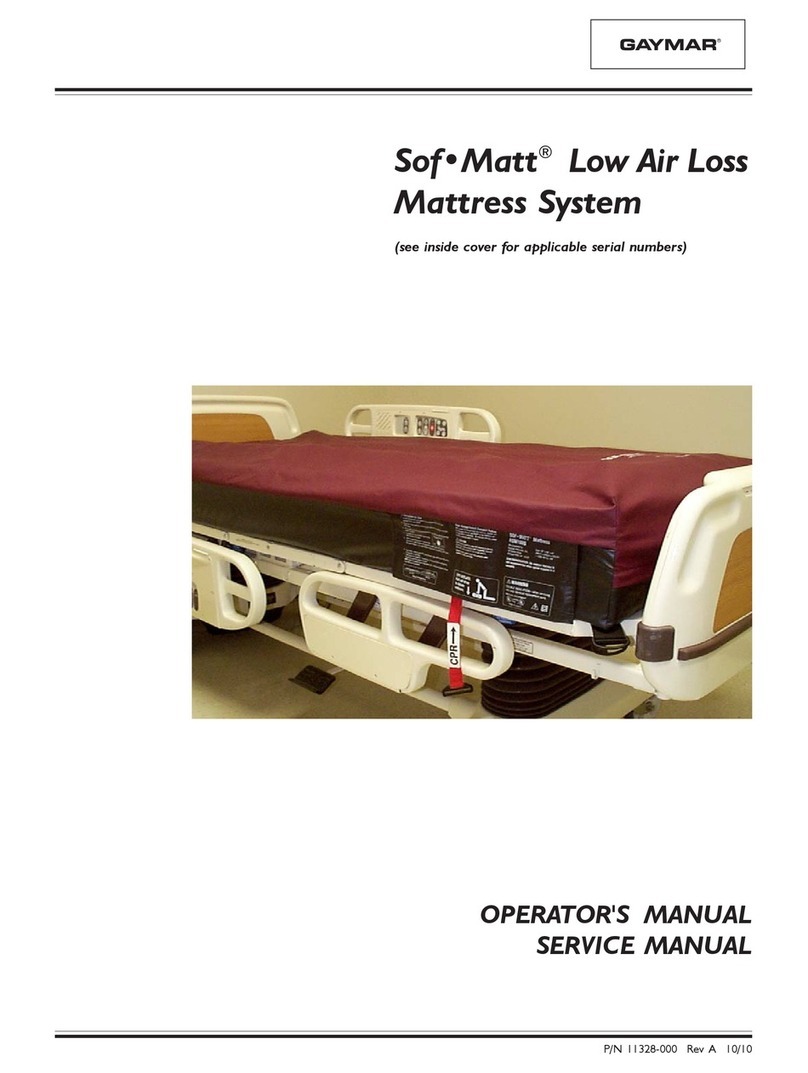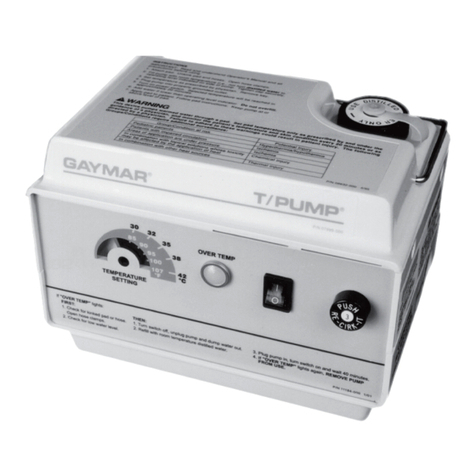
Medi-ThermTM II
1.0 Indications for Use
For the prevention or treatment of hyperthermia/
hypothermia.
1.1 Contraindications
Patients with an elevation of cold agglutin levels (cold
agglutinemia) should not be placed on a cooling blanket.
In rare instances, the cold temperature of the cooling
blanket may lead to acrocyanosis and necrosis of distal
body structures (Talisman, R., et al. Surgery 123(5): 592-
595 (1998).
2.0 Safety Precautions
Read and understand this operating manual and all
precautions listed below prior to using the Medi-Therm II
Hyper/Hypothermia Machine.
• If the patient’s temperature is not responding or
does not reach the prescribed temperature in the
prescribed time or deviates from the prescribed
temperature range, notify the attending physician
promptly.Failuretonotifythephysician
promptlymayresultinseriousinjuryor
death.
• When performing the PROBE CHECK, use a
protective sheath on the probe. Failuretousea
sheathcouldresultincross-contamination.
• A physician’s order is required for setting blanket
temperature and for continued use of equipment.
At least every 20 minutes or as directed by
a physician, check patient’s temperature and
skin condition of areas in contact with blanket;
also, check blanket temperature. Pediatric,
temperature-sensitive, and operating room
patients should be checked more frequently.
Failuretomonitorpatientmayresult
inskindamageorinappropriatepatient
temperature.
•Avoid placing additional heat sources between the
patient and blanket.Skindamagemayresult.
• Use only Gaymar probes (see Accessories, page 16)
or probes having characteristics equivalent to
YSI 400 series probes in the Patient Probe jack.
Useofotherprobescouldresultin
erroneouspatienttemperaturevalues.
• Prevent excessive and/or prolonged tissue
pressure and shearing forces, especially over
boney prominences.Skindamagemayresult.
•For grounding reliability, plug only into a properly
grounded outlet.
•Fill with distilled water only.Do not use alcohol.
Do not operate without water. Do not overfill.
Overllingmayresultinoverowwhenthe
waterintheblanketdrainsbackintothe
machine.
•Place a dry absorbent sheet between the patient
and the blanket when using all-vinyl blankets.
Moisturemayaccumulatewhichmayresult
inskindamage.
•The POWER LOSS INDICATOR battery may discharge
if the Medi-Therm II machine has not been used
for two months or more. Thebatterymaynot
becomerechargeduntilthemachinehas
operatedforfourhours.
•Keep the area between the patient and the blanket
dry.Excessivemoisturemayresultinskin
damage.
•Do not tip machine over without first draining the
water out and unplugging the power cord. Damage
tothemachineorelectricalshockcanresult.
• Use of thermally conductive materials (e.g., water
or gel) on a patient when the Medi-Therm II is
switched off may decrease the patient's body
temperature.
•Repairs should be performed only by qualified
medical service personnel in accordance with this
product's service manual.Otherwise,damageto
themachineorimpropertherapymayresult.
• All wire-lead, patient-connected transducer
assemblies are subject to reading error, local heating,
and possible damage from high-intensity sources of
RF energy. Inadequately grounded electrosurgical
equipment represents one such source, since
capacitively-coupled currents may seek alternate
paths to ground through probe cables and associated
instruments. Patientburnsmayresult.
If possible, remove the probe from patient contact
before activating the surgical unit or other RF
source. If probes must be used simultaneously with
electrosurgical apparatus, hazards can be reduced by
selecting a temperature monitoring point which is
remote from the expected RF current path to the
ground return pad.
Indications/Safety Precautions
1
